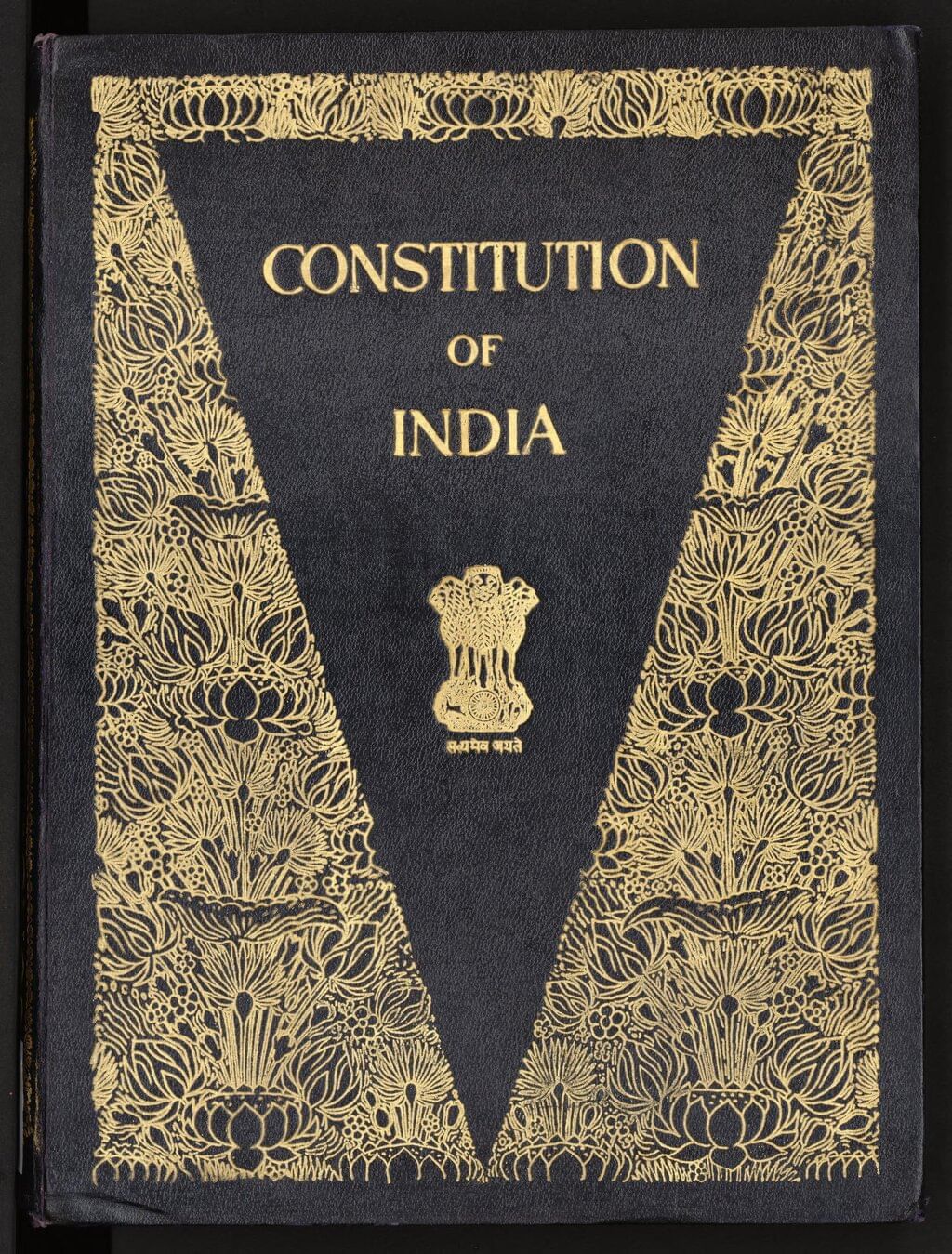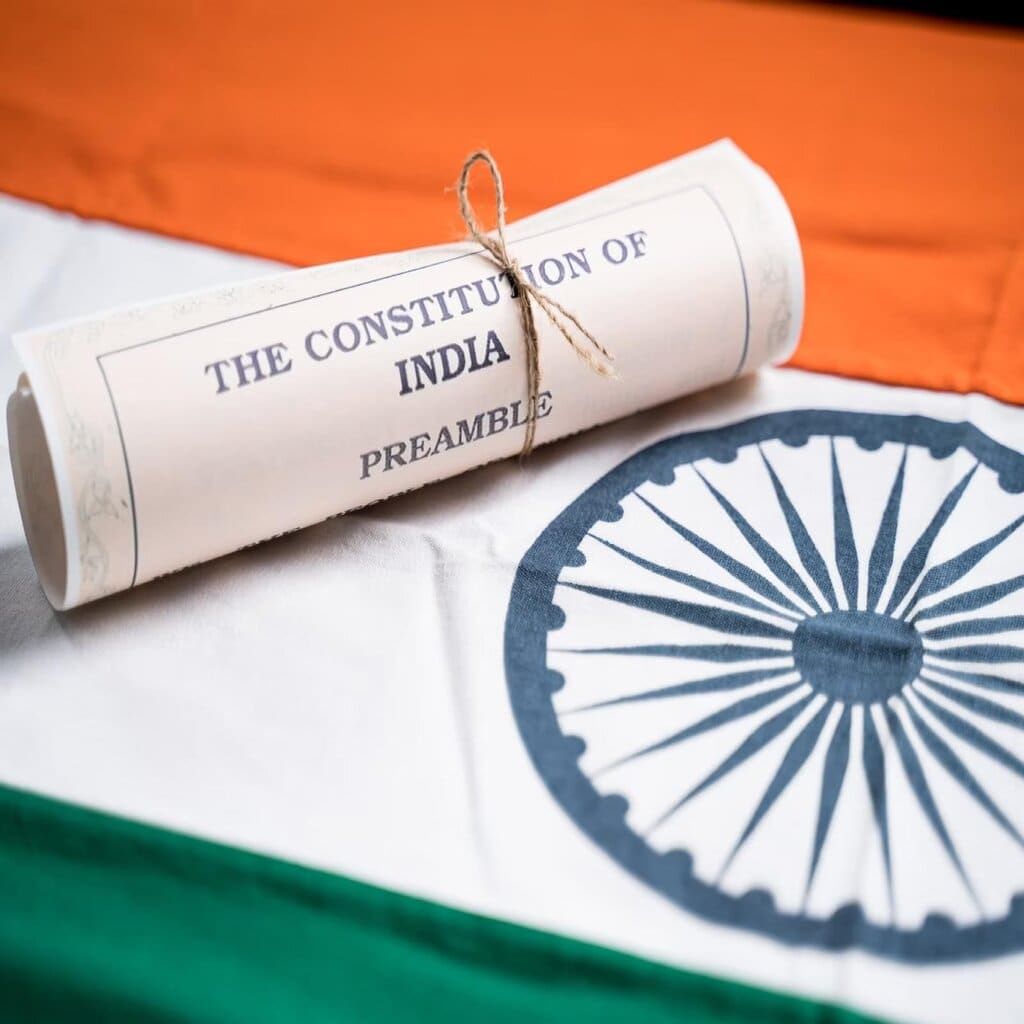The Indian Constitution Chapter Notes | Social Studies Class 5 ICSE PDF Download
| Table of contents |

|
| Introduction |

|
| What is Constitution? |

|
| Need for a Constitution |

|
| Formation of the Indian Constitution |

|
| Nature of the Indian Constitution |

|
| Guiding Principles |

|
| Points To Remember |

|
| Glossary |

|
Introduction
The Indian Constitution is a very important book of rules that tells us how our country, India, should be governed. It was made after India became free from British rule in 1947, to help the country run smoothly and fairly. This chapter teaches us why we need a Constitution, how it was made, what it contains, and the values it gives us to live together as a united and free nation. It also explains why we celebrate Republic Day on 26 January every year.

What is Constitution?
Every place, such as a school, club, or office, needs rules to work smoothly, and a country is no different because it also needs rules to run properly. These rules for a country are called a Constitution, which helps the country function well by setting guidelines for everyone to follow.
Need for a Constitution
- India is our country, and we enjoy complete freedom as Indian citizens.
- Before 15 August 1947, India did not have this freedom.
- Before that date, India was ruled by the British.
- Indians were treated as inferior during British rule.
- Indians were not allowed to take part in important things like education, work, and society.
- The British forced their ideas on Indians in every part of life.
- After India became independent, the responsibility to run the country came to Indian people.
- Indians were worried about giving every Indian freedom and respect.
- At the same time, India needed rules to run smoothly.
- Indian leaders agreed that a Constitution was needed.
- The Constitution is a book of rules, principles, promises, rights, and duties for all people in the country.
- It is the supreme law of the country, meaning it is the most important law.
Formation of the Indian Constitution
- On 9 December 1946, eight months before India became independent, a group of Indian leaders and thinkers met.
- They met in the Central Hall of the Parliament House in New Delhi.
- They came together to discuss ideas on how to govern India and write the Constitution.
- This team of thinkers was called the Constituent Assembly.
- The Constituent Assembly had 299 members.
- Dr. B. R. Ambedkar was the chairman of the Constituent Assembly.
- The members shared many ideas and suggestions.
- These ideas were put together in a structured form as the Constitution.
- It took around three years to complete the Constitution.
- The Indian Constitution was adopted on 26 November 1949.
- The Constitution came into effect on 26 January 1950.
- On 26 January 1950, India was declared a republic.
- Since then, we celebrate 26 January as Republic Day every year.
Fun Fact
- The Constitution was signed by Dr. Rajendra Prasad, the first President of India.
- It was also signed by Pandit Jawaharlal Nehru, the first Prime Minister of India.
- Vallabhbhai Patel and many others also signed the Constitution.
Nature of the Indian Constitution
- The Indian Constitution is the longest written constitution in the world.
- It is written in English and has been translated into Hindi also.
- It lays down the rules on how the country should be governed.
- It defines the powers and duties of the government.
- It also defines the rights and duties of the citizens.
- Some important parts of the Constitution are the Preamble, Fundamental Rights, Duties of the citizens, and the Directive Principles.
- The government must follow these as guidelines to govern well.
Fun Fact
- The original Constitution of India was entirely calligraphic, meaning it was handwritten.
- Prem Behari Narain Raizada wrote the Constitution by hand.
- It took him six months to complete the task.
- One original copy is handwritten in English, and the other in Hindi.
Guiding Principles
The Indian Constitution begins with the Preamble, which acts as an introduction. It lists the values and principles that the Constitution is built on. To understand these guiding principles, we need to look at the key words in the Preamble, which declare India to be a sovereign, socialist, secular, democratic, and republic nation. It also mentions other important ideas like Justice, Liberty, Equality, and Fraternity, which guide how the country should be governed and how its people should live together.
 Let's understand the meaning of each of these terms:
Let's understand the meaning of each of these terms:
Sovereign
- India is a free country.
- People of India can take decisions to run the country on their own.
- No other country can tell India what to do.
Socialist
- Socialism means social and economic equality.
- The word "socialist" in our Constitution means the government will try to ensure that all people share the country’s wealth.
- It also means that all people should lead a decent standard of living.
Secular
- People of all religions are treated equally by the government.
- Every citizen has the right to follow any religion of his or her choice.
Democratic
- Democracy is a government of the people, by the people, and for the people.
- People elect their own government in a democratic country.
- India is the largest democracy in the world.
- Every Indian citizen of eighteen years and above has the right to choose a leader through voting.
Republic
- The head of the State is not a king or queen, and it is not a hereditary position.
- The position of a head cannot be passed down the generations of a family.
- The head of the State is always elected by the people for a fixed period.
The preamble also mentions the following terms:
Justice, Social, Economic, and Political
- People should be treated fairly.
- The government should work for the welfare of all, especially disadvantaged groups.
Liberty, of Thought, Expression, Belief, Faith, and Worship
- Freedom to express one’s thoughts, form peaceful groups, live where one likes, and choose and practice one’s religion.
Equality, of Status and Opportunity
- All citizens should be treated the same way, no matter their caste, religion, gender, place of birth, or whether they are rich or poor.
- The government should give all citizens equal opportunities to improve their lives.
Fraternity, Assuring the Dignity of the Individual and the Unity and Integrity of the Nation
- All of us should behave as if we are members of the same family.
- No one should treat a fellow citizen as inferior.
Fun Fact
- The Preamble to our Constitution was inspired by the Preamble of the Constitution of the United States of America.
- The Indian Constitution drew inspiration from the Constitutions of the USA, Britain, Canada, France, Ireland, USSR, Japan, Australia, South Africa, and Germany.
- Dr. B. R. Ambedkar is also known as the "Father of the Indian Constitution".
Points To Remember
- A Constitution is a book of rules for a country to run smoothly.
- A team of thinkers who came together to write the Constitution is called the Constituent Assembly.
- The Constituent Assembly had 299 members under the chairmanship of Dr. B. R. Ambedkar.
- The Indian Constitution came into effect on 26 January 1950.
- The Indian Constitution is the longest written constitution in the world.
- The Preamble mentions the values and principles on which the Constitution is based.
Glossary
- Adopted: To choose and follow something.
- Concern: To worry about something.
- Govern: To rule a place or a group of people.
- Inferior: A person lower in position or rank compared to another.
- Principles: Basic values or laws that show what is good and right.
- Privilege: A special advantage given to someone.
- Republic: A country where the head of the state is an elected person.
|
88 docs|20 tests
|
FAQs on The Indian Constitution Chapter Notes - Social Studies Class 5 ICSE
| 1. Why is a constitution important for a country like India? |  |
| 2. What were the main influences on the formation of the Indian Constitution? |  |
| 3. What is the nature of the Indian Constitution? |  |
| 4. What are the guiding principles of the Indian Constitution? |  |
| 5. How does the Indian Constitution protect the rights of its citizens? |  |




















